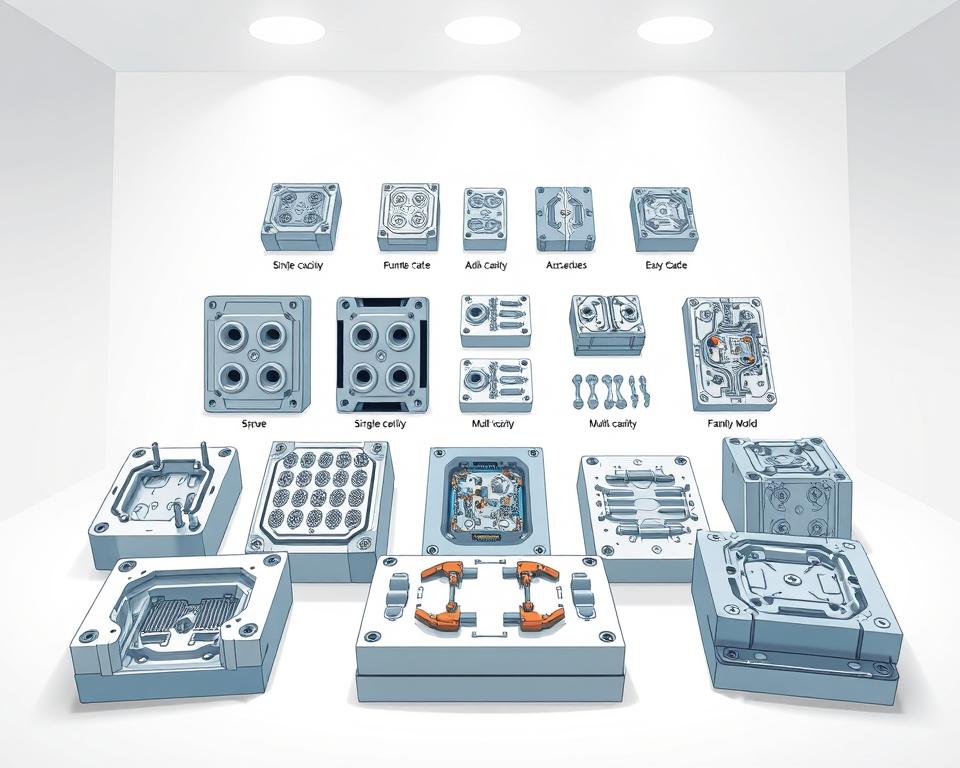China Injection Molding Sourcing: A Complete Guide
So, the big meeting just wrapped up. your new project has the green light, time is pressing, and the budget is, let’s say, constrained.. Then someone—maybe your boss, maybe the finance director—utters the phrase that sends a little jolt down every project manager’s spine: “We should look at sourcing this from China.”
You nod, of course. It seems sensible at first glance. The cost savings can be huge. But your mind is already racing. You know the rumors, don’t you? The nightmare of defective parts, opaque communication, and delayed, off-spec shipments. It feels like walking a thin line between big savings and total project failure.
But here’s the catch. Sourcing plastic mold company doesn’t have to be a gamble. It’s simply another project with clear steps. And as with any project, success depends on your methodology. It’s not just about the lowest bid but selecting the best partner and overseeing every step. Disregard those scary tales. Let’s walk through a real-world playbook for getting it right.

Step One: Do Your Homework
Before you mention “supplier” or browse Alibaba, organize your internal data. Honestly, more than half of all overseas manufacturing problems start right here, with a weak or incomplete information package. Don’t assume a remote factory can guess your needs. A vague RFQ is like telling a contractor to bid on “a house.” The replies will range from absurdly low to exorbitant, none of which help.
Your RFQ should be bulletproof—clear, detailed, and unambiguous. This package is your project’s foundation.
What should you include?
Begin with 3D CAD models. They cannot be skipped. Provide files in common formats (e.g., STEP, IGS) to prevent import issues. This is the master blueprint for your part’s geometry.
Yet 3D models don’t cover everything. You also need detailed 2D drawings. Here you specify what 3D can’t show. I’m talking about critical tolerances (like ‘25.00±0.05 mm’), material specifications, required surface finishes, and notes on which features are absolutely critical to function. If a specific surface needs to be perfectly smooth for a seal, or a particular hole diameter is vital for an assembly, your 2D drawing needs to shout it from the rooftops.
After that, material choice. Don’t label it simply “Plastic.” Even “ABS” alone is too vague. Be explicit. Specify SABIC Cycolac MG38 in black, if that’s the resin you need. Why? Because resin grades number in the thousands. Defining the exact material guarantees the performance and appearance you designed with plastic mold injection.
They can offer alternatives, but you must provide the initial spec.
Finally, include the business details. What is your Estimated Annual Usage (EAU)? A supplier needs to know if they’re quoting a tool that will make 1,000 parts in its lifetime or 1,000,000 parts a year. Tool style, cavity count, and unit cost are volume-driven.
Hunting for the Best Supplier
Now that your RFQ is pristine. now, who do you send it to? Online sourcing is global but crowded. Locating vendors is easy; vetting them is the real challenge.
You’ll probably kick off on Alibaba or Made-in-China. They offer breadth but not depth. But think of them as a starting point, not the finish line. Narrow your pool to about a dozen promising firms.
Still, you must dig deeper. Think about engaging a sourcing agent. They do cost extra. But a good one has a vetted network of factories they trust. They handle local liaison and oversight. On your first run, this is like insurance. Consider it timeline insurance.
Also consider trade fairs. If you can attend, shows such as Chinaplas transform sourcing. In-person meetings trump emails. Hold samples, talk shop, and gauge professionalism firsthand. Plus, ask peers for referrals. Tap your professional contacts. A recommendation from a trusted peer is often worth its weight in gold.
Shortlisting Serious Suppliers
Now you have your long list of potential suppliers and you’ve sent out your beautiful RFQ package. bids begin to arrive. Some prices will undercut logic, others will shock you. Now, sift through and shortlist 2–3 reliable candidates.
How to proceed? It blends technical checks with intuition.
Begin with responsiveness. Is their turnaround swift and concise? Is their English good enough for complex technical discussions? But the key: do they probe your RFQ? A great supplier will review your RFQ and come back with thoughts. For instance: “Draft angle here could improve mold release. Tolerance check via CMM adds cost—proceed?” Consider that a big green light. It proves their expertise and involvement. A “Sure, no issues” vendor often means trouble.
Then confirm their machinery specs. Request their machine list. Seek samples or case studies of comparable projects. If you’re making a large, complex housing, you don’t want a shop that specializes in tiny gears.
Finally, inspect the factory. This is not optional. Just as you interview hires, audit suppliers. Either visit in person or engage a local audit service. They perform a one-day factory inspection. They confirm legitimacy, audit ISO 9001, inspect equipment condition, and gauge the facility. It’s the best few hundred dollars you will ever spend on your project.
Transforming CAD into Real Parts
After picking your vendor, you’ll agree on terms, typically 50% upfront for tooling and 50% upon first-sample approval. Then comes the real action.
The first thing you should get back after sending your payment is a DFM report. DFM stands for Design for Manufacturability. It’s the engineering critique for moldability. It will highlight potential issues like areas with thick walls that could sink, sharp corners that could cause stress, or surfaces without enough draft angle for clean ejection from the mold. A thorough DFM is a sign of a professional operation. It’s a two-way partnership. Together, you tweak the design for best manufacturability.
When you greenlight the DFM, they machine the mold. Weeks on, you receive the thrilling “T1 samples shipped” notification. These are your initial mold shots. It’s your test of success.
Be prepared: T1 samples are almost never perfect. This is normal! Look for small flaws, slight size errors, or surface marks. You supply feedback, they tweak the tool, and T2 plastic mold in China samples follow. This process might take a couple of rounds. Plan for this loop in your schedule.
Finally, a flawless part arrives. It meets every dimension, the finish is flawless, and it functions exactly as intended. This becomes the “golden sample.” You formally approve it, and this sample is now the standard against which all future mass-produced parts will be judged.
Crossing the Finish Line
Landing the golden sample is huge, yet the project continues. Now you’re entering the mass production phase. How do you ensure that the 10,000th part is just as good as the golden sample?
Implement a robust QC plan. Typically, this means a pre-shipment audit. Bring in an external QC firm. For a few hundred dollars, they will go to the factory, randomly pull a statistically significant number of parts from your finished production run, and inspect them against your 2D drawing and the golden sample. They’ll send you a detailed report with photos and measurements. After your approval, you release the shipment and final funds. This simple step prevents you from receiving a container full of scrap metal.
Finally, think about logistics. Understand the shipping terms, or Incoterms. Are you on FOB terms, where they load and you take over? Or EXW, where you handle everything from their gate? These details have a big impact on your final landed cost.
Sourcing from China is a marathon, not a sprint. It relies on partnership-building. See them as collaborators, not vendors. Transparent dialogue, respect, and process discipline win. No question, it’s demanding. But with this roadmap, you can succeed, achieve savings, and maintain quality. You’re set to succeed.


